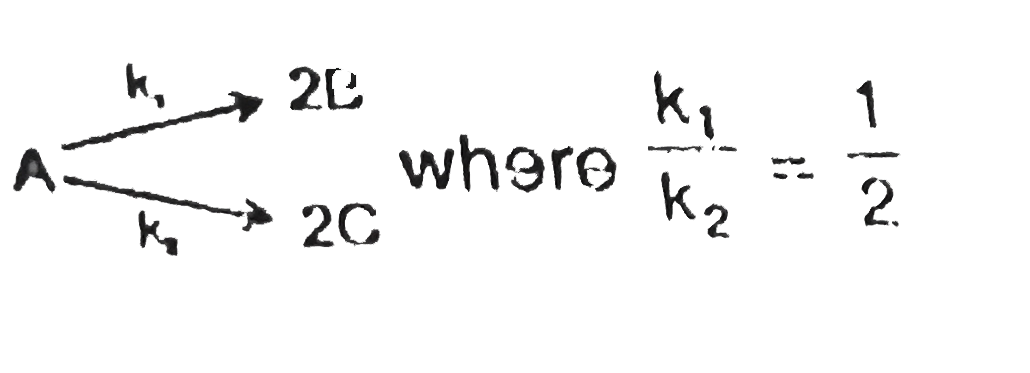For a hypotherical elementary reaction  where k1k2=12
where k1k2=12
Initailly only 2 moles of A are present.
The total number of moles A,B and C at the end of 50% reaction are :
A
2
B
3
C
5
D
None
Text Solution
The correct Answer is:B
When 1 mole of A is present then 2 mole of B and C will forms after completion of the reaction but when 50% is complete then the total mole =1+2x1=3
|
Topper's Solved these Questions
Similar Questions
For a hypotherical elementary reaction
 where k1k2=12
where k1k2=12
Initailly only 2 moles of A are present.
The sum of mole of (B) are ( C) at end of reaction is :
View SolutionFor a hypotherical elementary reaction
 where k1k2=12
where k1k2=12
Initailly only 2 moles of A are present.
Number of moles of B are , if reactions gets 50 % completed :
View Solution
Knowledge Check
For a hypotherical elementary reaction
 where k1k2=12
where k1k2=12
Initailly only 2 moles of A are present.
Number of moles of B are:A2B1C0.666D0.333For a hypotherical elementary reaction
 where k1k2=12
where k1k2=12
Initailly only 2 moles of A are present.
The sum of mole of (B) are ( C) is :A2B3C1D4For given hypothetical elementary parallel reaction,

Intially only 2 moles of A are present. The total no. of moles of A, B and C at the end of 75% reaction are:A2B3C4D3.5
Rate law for the elementary reaction 2AB→k1A2+B2 will be:
View SolutionFor the following elementary first order reaction:

If k2=2k1, then % of B in overall product is:
View SolutionWhen one mole each of CO and O2 are made to react at STP, the total number of moles at the end of the reactions is
View SolutionRate law for the elementary reaction 2AB→k1A2+B2 will be:
View SolutionFor the following elementary first order reaction:

If k2=2k1, then % of B in overall product is:
View Solution
